Félicette is a cat who weighs only about two and a half pounds, and has spent most of her life on the streets of Paris. Before joining the ranks of 1 of 14 “cats” selected and trained by French scientists, Félicette was a healthy feral cat.
In 1963, the Félicette cat overcame challenges that no other individual of the same species had ever achieved. It was chosen both for its calm demeanor and suitable for the space mission when it has a balanced and light body. In October of the same year, Félicette was put on a rocket, preparing for the historic journey.
Unlike the tragic fate of previous experimental animals, the cat Félicette still had to go through an extremely dizzy time on the space flight, but she still landed safely.

However, while other animals that go into space like the dog Laika and the chimpanzee Ham are celebrated and widely known, the feral cat seems to have suffered injustices and was soon forgotten by history. forget.

By the 1960s, when the “space race” began to heat up, while the US and the Soviet Union had made certain progress and achievements, the French realized their shortcomings in the space program. .
They plan to use mice to test the first aerospace programs. But that’s not quite as impressive as the Soviet spaceflight with Laika in 1957, or the American chimpanzee Ham in 1961.
Furthermore, the goal of animal spaceflight in this period was to understand how space flight might affect human physiology. Thus, the rat species did not provide scientists with much insight. So, French scientists turned their attention to another animal, the cat.
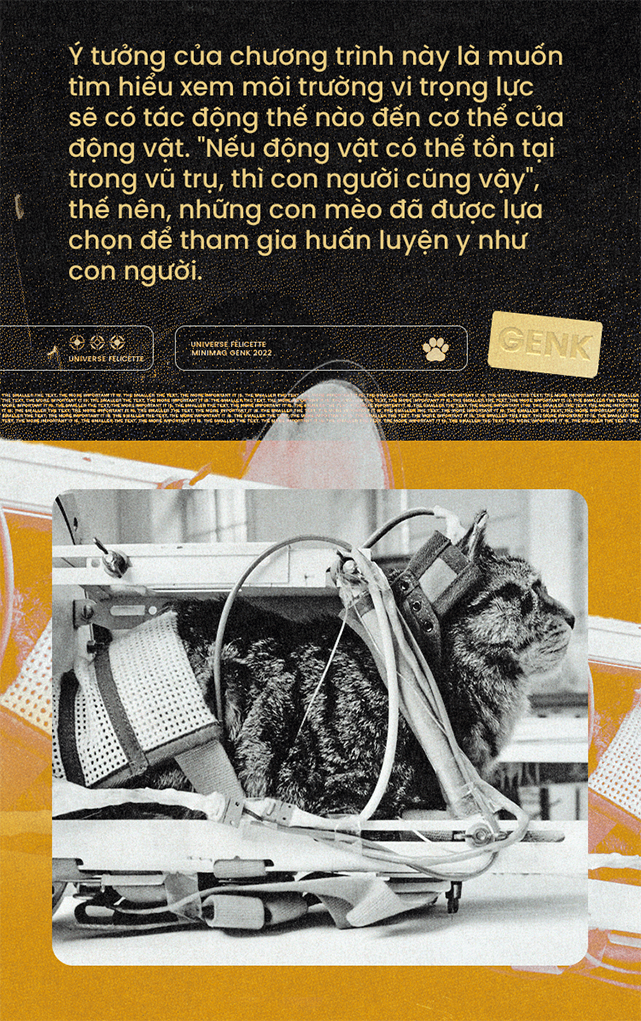
Michel Viso, a former veterinarian and head of the department of epidemiology at France’s National Center for Space Research, explains the reasons for choosing this animal: “Cats were one of the most widely used animals for neurophysiological studies at the time.”
In other words, choosing an animal that scientists have well understood in the studies is always the most appropriate and optimal choice. So, in pursuit of their new goal, scientists at the Center d’Enseignement et de Recherches de Médecine Aéronautique (CERMA) purchased and recruited 14 female cats, and began putting them through training. Train to become an “astronaut”.
Of these 14 cats, one was of particular interest, bearing the number “C 341”, and later this exceptionally calm bisexual cat became known to all as Félicette.

Félicette and 13 other cats went through a rigorous screening process to see how they would react to space flight. They have to endure tests of their bodies’ adaptation to zero gravity, loud rocket blasts, stimulation of electrodes in their brains, and even sessions of centrifugation – with can cause abdominal pain for several months in humans.

Out of all the selected cats, Félicette, after passing many tests, became one of six candidates to go into space. In the end, the scientists chose Félicette as the only cat put into space on this program, because she was the one that was able to maintain her weight – the other cats on the show gained weight. , and more importantly, Félicette is a cat with an extremely calm, balanced demeanor.
“Félicette is the right cat for the job”, one of the CERMA scientists later said. “Any panic response detected will cause it to be removed from the program because that causes its brain signals to be noisy and unreadable.”
At 8:09 am on October 18, 1963, in Hammaguir, Algeria, the cat Félicette officially became the first cat to fly into space, it was placed in a specialized box, mounted on a Véronique AG1 rocket. , and launched into space at 5-6 times the speed of sound.
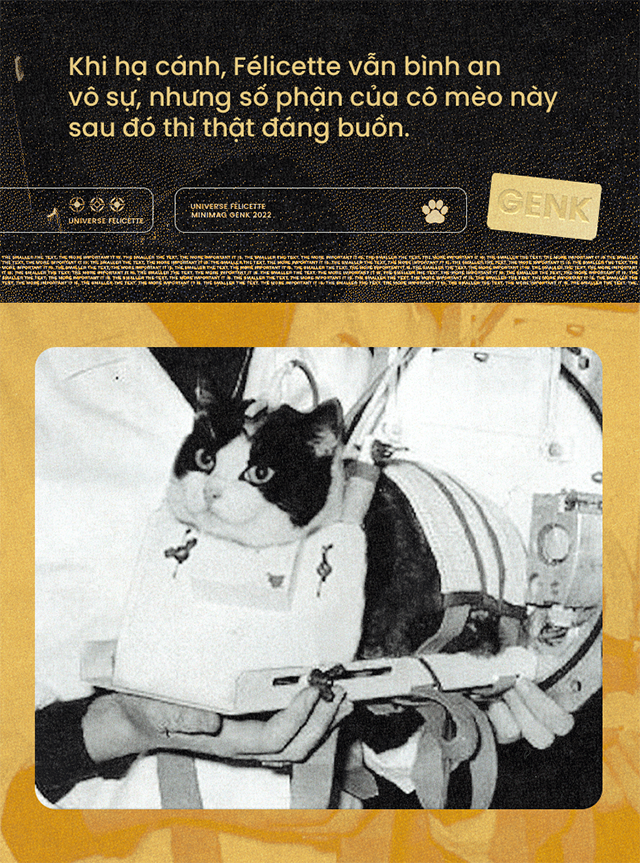
Visa explains: “The rocket flew very high, nearly 157 km. After a 15-minute flight in outer space, the box was detached, parachuted and returned to Earth as a heroine of France.”
The media favorably nicknamed this astronaut cat “Astrocat” after the famous cartoon. However, the following days of this cat did not have the glory of a creature who sacrificed himself for humanity.

Félicette’s moment of heroism did not last long. Before the flight, Félicette’s brain was attached to an electrode, and shortly after the cat returned to Earth, scientists used it to study the effect of microgravity on nerves. Félicette’s brain suddenly became a valuable research asset. Giving her brain (involuntarily) to medicine is the last dedication of the French feral cat.
Since then, Félicette’s impressive legacy has begun to fade in the eyes of humanity. Why is that? Why is Félicette forgotten while animals like Ham the chimp and Laika the dog are remembered and honored by mankind?
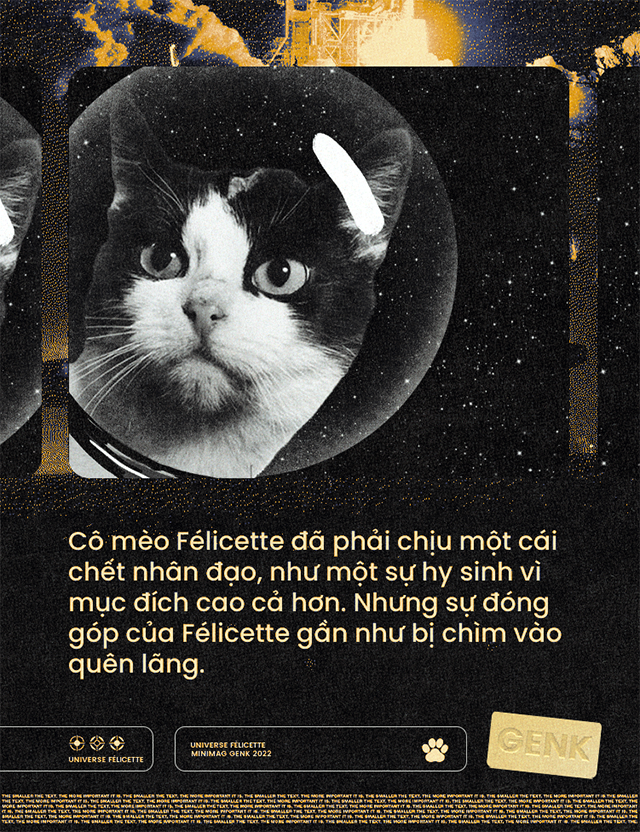
Robert Pearlman, space historian and editor of the space history website SPACE said: “I think this oblivion could be a matter of how history plays out. The effort that led to the launch of humans into space, and ultimately to the Moon, is essentially a space race between the two. United States and the Soviet Union”.
Because the French had never launched a man into space – they later collaborated with the European Space Agency – their early achievements paled in comparison to those of Russia and the United States. And accordingly, Félicette’s story is also easily forgotten.
And even the French have forgotten the presence of this cat, most clearly demonstrated in 1997, when a set of stamps was issued to honor Félicette’s space flight, but people described it Félicette is described as a male cat named Félix.
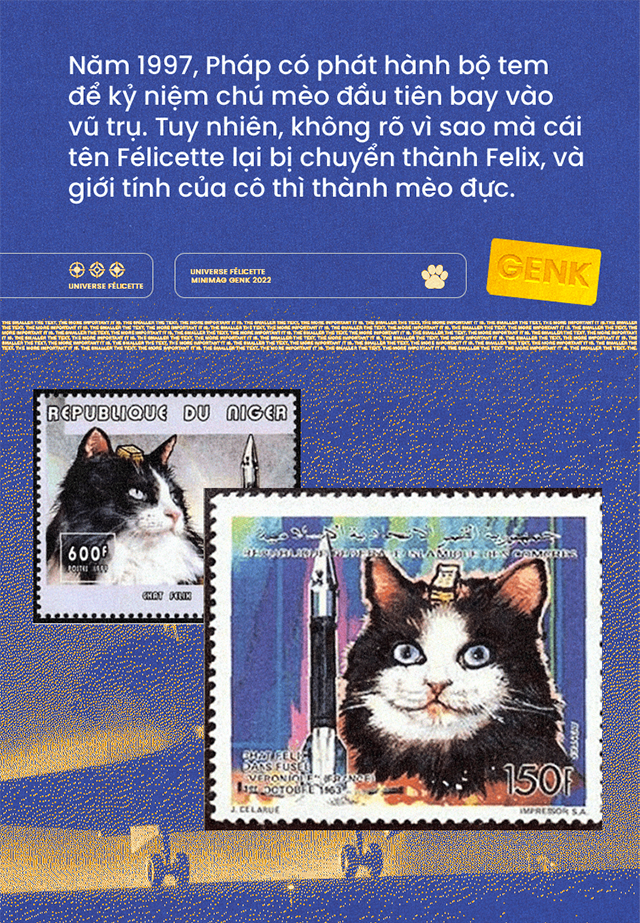
But that started to change in 2017. After a man in London named Matthew Serge Guy organized a campaign to build a bronze memorial in honor of “Astrocat”.
“For the past 54 years, the story of the first and only cat to go into space has been forgotten. But she absolutely deserves to be known and remembered.”, wrote Matthew.
“Although other animals that go into space – such as Laika and Ham the chimp – are well known in popular culture and have lasting memorial images, very few people know that one cat was once sent into space and safely returned to Earth. Now it’s time for ‘Astrocat’ to get the memorial she deserves.”
Guy’s campaign succeeds. He raised more than $57,000 to create a statue for Félicette, currently installed at the International Space University in Strasbourg, France.
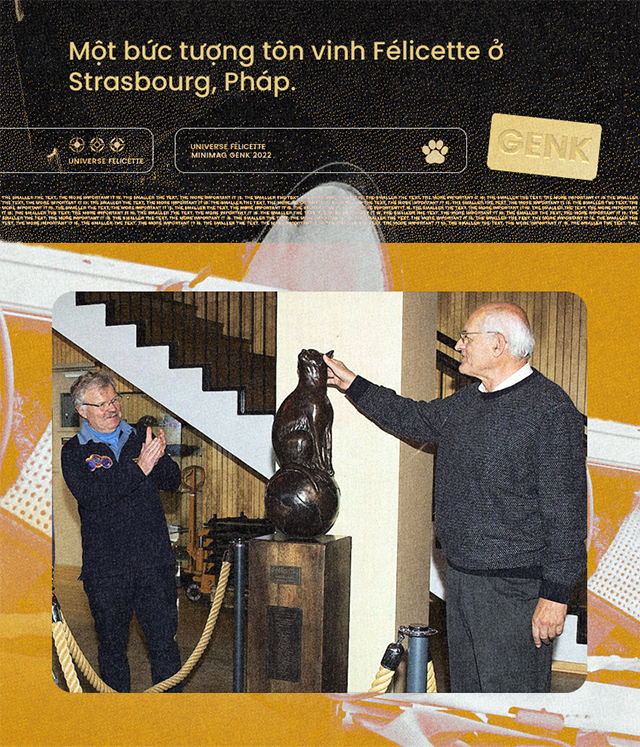
Later, the University of Toulouse III also announced that they would be naming their upcoming observatory after Félicette. The observatory is expected to open in 2023, using the Astrocat as its symbol.
As such, Félicette is finally getting the recognition it deserves. Its contribution to space travel may be small – and certainly involuntary – but it is nonetheless a historic landmark.
.
